Bikram Yoga Poses and Hot Yoga: Full Guide Explained

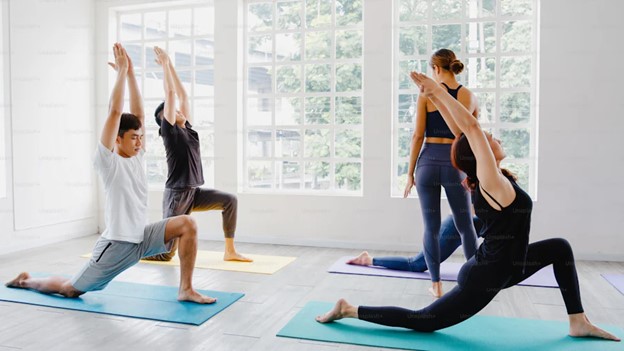
Looking for a full explanation of Bikram Yoga poses or hot Yoga poses ?
I will try to define hot yoga simply : it refers to a dynamic practice performed in a heated room, typically around 95-105 degrees Fahrenheit ( 37 -40 degrees celsius ) .
Sum up to define bikram yoga : the creator ( Bikram Choudhury ) started the hot Yoga movement with his 26/2 ( Twenty six postures and two breathing exercices ) . Since then, many peoples practice Vinyasa in hot room temperature too . Even more since the controversy about Bikram ( See below )
The elevated temperature intensifies the yoga experience, promoting increased flexibility and detoxification through profuse sweating. Popular variations include Bikram and hot vinyasa, incorporating a series of poses and breathing exercises (26/02 ) . The heat enhances circulation, accelerates calorie burn, and encourages mental focus. Hot yoga is believed to aid in stress reduction, muscle relaxation, and heightened endurance. While it demands physical resilience, practitioners often find the warmth invigorating, deepening the practice and promoting a sense of purification and well-being.
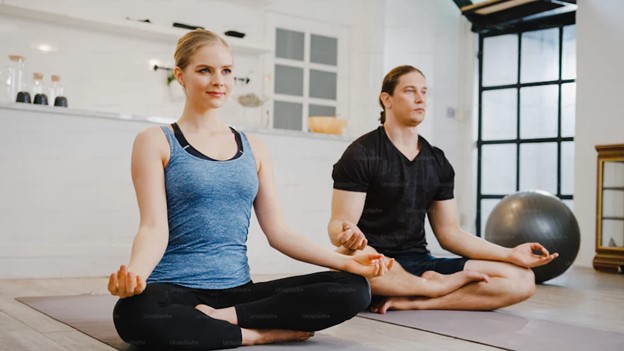
PLAN OF THE ARTICLE :
– Bikram hot Yoga poses sequence
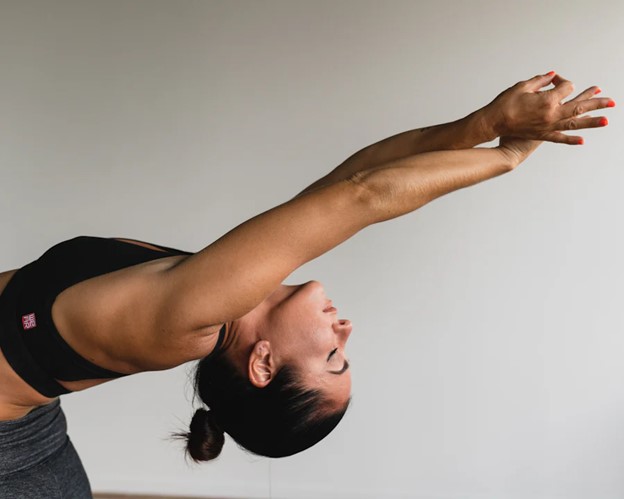
Bikram yoga definition
Bikram yoga, also known as hot yoga, takes place in Bikram studios with high temperatures, creating a challenging environment for Bikram yoga sessions. This style of yoga was developed by Bikram Choudhury, the founder of Bikram yoga. It is the first style of hot yoga and consists of a 16-week program of hot yoga with specific sequences of different yoga poses.
Bikram classes are conducted in a room heated to high temperatures using infrared heating, which can lead to a hot yoga workout that is intense and effective for physical fitness. Bikram-trained teachers lead the sessions, guiding students through traditional yoga poses in the hot temperature environment.
While hot yoga can offer benefits for mental health and health-related quality of life, including improved glucose tolerance and physical fitness, it also presents risks, especially for certain populations like pregnant people and those with heart disease. It is important to stay hydrated during Bikram yoga sessions by bringing a water bottle and using a yoga mat for comfort and stability.
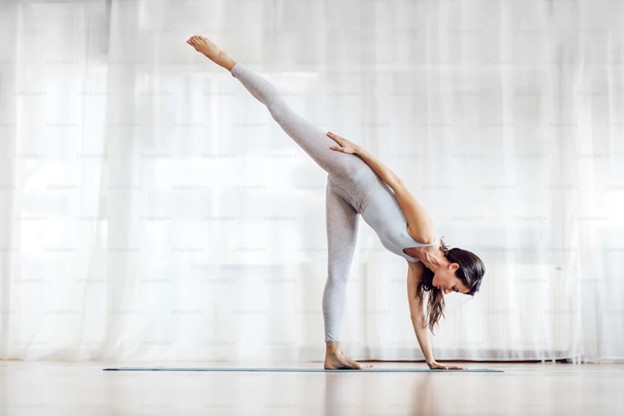
Bikram yoga has faced controversies, including legal troubles and allegations of sexual assault against Bikram Choudhury. Despite those issues, some people find hot yoga to be a good idea for maintaining their well-being, although it may not be suitable for everyone, especially those with heat-related illnesses or individuals who experience depressive symptoms.
If you want more informations about his creator Bikram Choudhury, check below :
https://en.wikipedia.org/wiki/Bikram_Choudhury
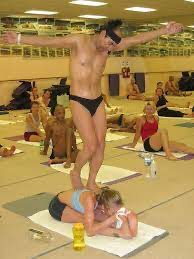
The American Council on Exercise and Yoga Alliance have guidelines for hot yoga practices, emphasizing the importance of safety and the consideration of factors like body temperature and humidity levels. Some people prefer the original hot yoga style of Bikram yoga, while others may opt for vinyasa yoga or other styles of hot yoga with lower temperatures more akin to normal room temperature.
In the United States, Bikram yoga classes are popular among those seeking an intense workout in a heated environment, but it is essential to be mindful of one’s limitations and health status when engaging in this type of exercise. For best results, it is recommended to avoid practicing hot yoga on a full stomach and to listen to your body to prevent heat-related illnesses.
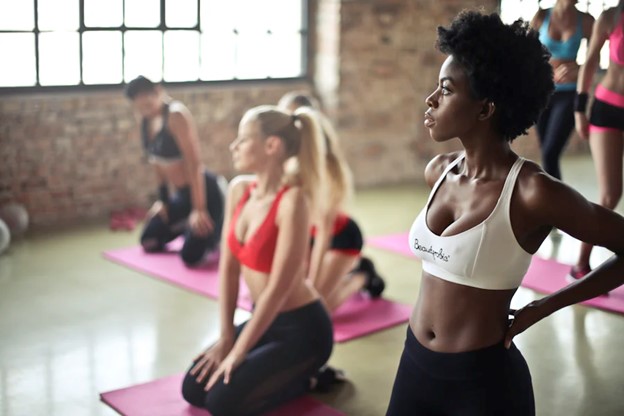
Benefits of Hot yoga positions and Bikram Yoga poses
1. Enhanced Flexibility:
The elevated temperature in hot yoga studios promotes increased flexibility by warming the muscles, allowing for deeper stretches and improved range of motion.
2. Detoxification:
Profuse sweating during hot yoga helps flush toxins from the body, promoting a sense of purification and supporting overall detoxification.
3. Improved Circulation:
The heat stimulates blood flow, enhancing circulation throughout the body. This increased blood supply delivers oxygen to muscles and tissues, aiding in recovery and revitalization.
4. Calorie Burn and Weight Loss:
Hot yoga can lead to an elevated heart rate and increased calorie burn. Regular practice, combined with a healthy lifestyle, may contribute to weight loss and improved metabolism.
5. Cardiovascular Health:
The cardiovascular system benefits from the cardiovascular nature of hot yoga. The heat induces a cardiovascular workout, promoting heart health and endurance.
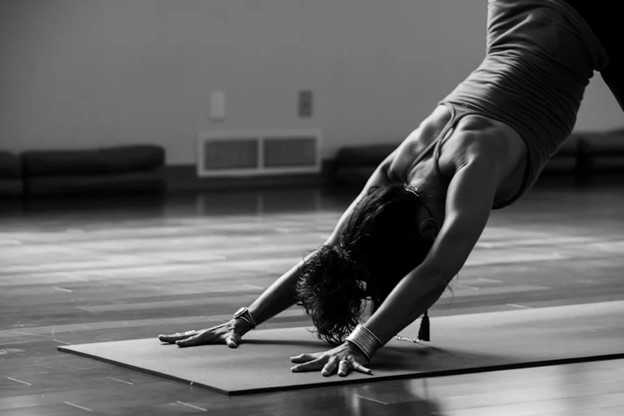
6. Stress Reduction:
The combination of challenging poses and controlled breathing in a heated room (5.39) environment can help alleviate stress and promote mental relaxation, contributing to improved mental well-being.
7. Muscle Relaxation:
The heat facilitates muscle relaxation, reducing tension and promoting a sense of ease. This can be particularly beneficial for individuals with muscle stiffness or chronic pain.
8. Mental Focus:
Hot room yoga demands concentration and mental focus due to the challenging conditions. Practitioners often find improved mindfulness and mental clarity as a result.
9. Enhanced Immune System:
Regular hot yoga practice, coupled with the detoxification process, may contribute to a strengthened immune system by eliminating impurities and supporting overall health.
10. Joint Health:
The increased warmth helps lubricate joints, potentially easing discomfort for individuals with joint issues. Hot yoga can be a gentle way to enhance joint mobility.
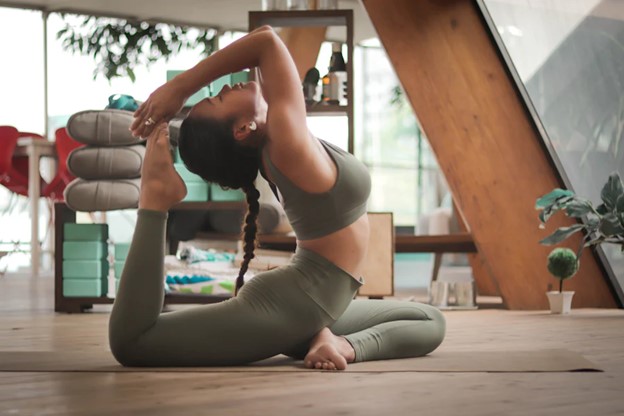
11. Community and Support:
Hot yoga classes often foster a sense of community and support. The shared experience of the challenging environment creates a supportive atmosphere among practitioners.
12. Emotional Release:
The intense physical practice in the heat may lead to emotional release. Some practitioners find that hot yoga provides a cathartic outlet for stress and emotional tension.
13. Enhanced Skin Health:
The combination of heat, increased blood circulation, and sweating can promote improved skin health. The release of toxins through sweat may contribute to a clearer complexion and a healthy glow.
14. Boosted Metabolic Rate:
Hot yoga’s challenging and dynamic nature, combined with the heat, can elevate the metabolic rate. This increased calorie burn during and after the practice may support weight management and fitness goals.
15. Improved Respiratory Health:
Practicing yoga in a heated room can enhance lung capacity and respiratory function. The controlled breathing exercises incorporated into hot yoga studio (6.36) help promote mindful breath control, potentially benefiting individuals with respiratory conditions
While the benefits of hot yoga are numerous, individuals with certain health conditions or sensitivities to heat should approach it cautiously. Staying hydrated, listening to the body, and seeking guidance from qualified instructors are crucial aspects of a safe and rewarding hot yoga practice.

Hot yoga asanas postures
The original hot yoga was the Bikram 26/2 ( see below ) but since a few years , many studios started to practice Vinyasa in hot environment . So you can practice any sequences or poses and feel the benefits of the hot temperatures
1. Bikram’s Beginning Yoga Class (Bikram choudhury Yoga):
A series of 26 postures and two breathing exercises performed in a heated room, focusing on balance, strength, and flexibility.
SEE OUR FULL DESCRIPTION BELOW
2. Sun Salutations (Hot Vinyasa):
A dynamic sequence that includes various yoga poses like Downward Dog, Plank, and Upward Dog, performed in a heated room to build strength, flexibility, and endurance.

3. Chair Pose (Utkatasana):
Strengthens the legs, core, and back muscles. In a heated room, this pose intensifies the challenge, enhancing muscle engagement.
4. Warrior Poses (Virabhadrasana I, II, III):
These standing poses build strength, stability, and focus. The heat increases the demand on muscles and promotes a deeper stretch.
5. Tree Pose (Vrikshasana):
Enhances balance and concentration while strengthening the legs and improving flexibility. The heated environment can intensify the challenge of maintaining balance.
6. Triangle Pose (Trikonasana):
Stretches and strengthens the legs, hips, and spine. The heat promotes suppleness, allowing for a deeper stretch.
7. Camel Pose (Ustrasana):
Opens the chest, stretches the front body, and strengthens the back. In a heated room, practitioners may find increased flexibility and depth in the stretch.
8. Locust Pose (Salabhasana):
Strengthens the back, buttocks, and legs. The heat encourages engagement of muscles, enhancing the effectiveness of the pose.
9. Pigeon Pose (Eka Pada Rajakapotasana):
– Stretches the hips and thighs deeply. The heated environment promotes relaxation and increased flexibility in hip muscles.
10. Child’s Pose (Balasana):
A restorative pose that provides a break during a hot yoga session. It promotes relaxation and releases tension in the back and shoulders.
11. Upward Bow Pose (Wheel or Urdhva Dhanurasana):
Strengthens the back, arms, and legs while opening the chest. The heat allows for a more profound backbend.
12. Corpse Pose (Savasana):
Typically practiced at the end of a hot yoga session, promoting relaxation and allowing the body to cool down after the intense practice.
These asanas, when practiced in a heated environment, intensify the physical challenge, enhance flexibility, and contribute to the overall cardiovascular and strength benefits associated with hot yoga. Practitioners should stay mindful of their bodies, stay hydrated, and approach each pose with awareness to reap the full benefits safely.
But basically , any poses or Vinyasa sequences can be practiced on hot temperatures . As long as your practice safely
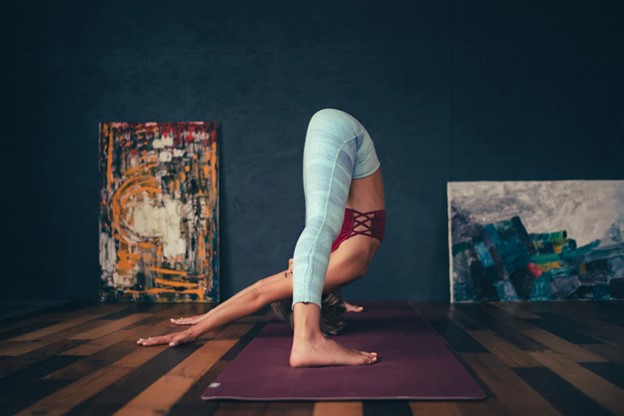
Bikram hot Yoga poses sequence
Poses in Bikram Yoga : 26 poses and 2 breathing exercises

1. Pranayama Series (Standing Deep Breathing) : This breathing exercise involves standing with feet together, arms raised, and interlocking fingers. Inhale deeply through the nose, expanding the chest and lungs, then exhale fully through the mouth.
2. Ardha Chandrasana with Pada-Hastasana (Half Moon Pose with Hands-to-Feet Pose) : This posture involves stretching to one side with one arm raised while maintaining balance and elongating the body.
3. Utkatasana (Awkward Pose) : This pose mimics sitting in an imaginary chair, engaging the leg muscles and core while maintaining balance.
4. Garudanasana (Eagle Pose): In this posture, one leg is crossed over the other while arms are twisted together in front of the body, challenging balance and flexibility.
5. Dandayamana-Janushirasana (Standing Head to Knee Pose) : This pose involves standing on one leg and bending forward to touch the forehead to the knee of the extended leg.
6. Dandayamana-Dhanurasana (Standing Bow Pulling Pose) : This posture involves balancing on one leg while reaching back to hold the foot of the other leg, arching the back and stretching the chest.
7. Tuladandasana (Balancing Stick Pose) : This pose requires balancing on one leg while extending the other leg and upper body parallel to the floor, creating a straight line.
8. Dandayamana-Bibhaktapada-Paschimotthanasana (Standing Separate Leg Stretching Pose) : In this pose, the legs are spread wide apart while bending forward to reach towards the floor, stretching the hamstrings and lower back.
9. Trikonasana (Triangle Pose) : This posture involves extending the arms and legs in opposite directions while keeping the torso upright, creating a triangular shape with the body.
10. Dandayamana-Bibhaktapada-Janushirasana (Standing Separate Leg Head to Knee Pose) : This pose involves standing with legs wide apart and bending forward to touch the forehead to the knee of one leg.
11. Vrikasana(Tree Pose): In this pose, one foot is placed on the inner thigh of the opposite leg while the arms are raised overhead with palms pressed together, focusing on balance and stability.
12. Padangustasana (Toe Stand Pose): This posture involves balancing on one foot while grabbing the big toe of the other foot with the hand and bending forward.
13. Savasana (Dead Body Pose) : This relaxation pose requires lying flat on the back with arms and legs extended, allowing the body to rest and rejuvenate.
14. Pavanamuktasana (Wind Removing Pose) : This posture involves hugging one knee to the chest while lying on the back, helping to release tension in the lower back and digestive system.
15. Sit-up : This exercise involves sitting up from a lying position, engaging the core muscles to strengthen the abdominal muscles.
16. Bhujangasana (Cobra Pose) : In this pose, the chest and head are lifted off the floor while the hands support the upper body, stretching the spine and opening the chest.
17. Salabhasana (Locust Pose) : This posture involves lifting the legs and upper body off the floor, engaging the back muscles and improving strength in the posterior chain.
18. Poorna-Salabhasana (Full Locust Pose) : Similar to Salabhasana, this pose involves lifting both legs and the upper body off the floor simultaneously, challenging the back muscles.
19. Dhanurasana (Bow Pose) : In this posture, the body forms a bow shape with the hands holding the ankles while lifting the chest and thighs off the floor, stretching the front of the body.
20. Supta-Vajrasana (Fixed Firm Pose) : This pose involves sitting on the heels with the torso reclined backward, stretching the quadriceps and ankles.
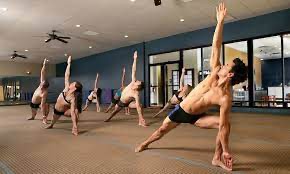
21. Ardha-Kurmasana (Half Tortoise Pose) : In this pose, the body folds forward with the forehead resting on the floor, promoting relaxation and stretching the spine.
22. Ustrasana (Camel Pose) : This backbend pose involves kneeling and reaching back to hold the heels while arching the back and opening the chest.
23. Sasangasana (Rabbit Pose): In this pose, the forehead is brought towards the knees while the hands reach back to hold the heels, stretching the spine and shoulders.
24. Janushirasana with Paschimotthanasana (Head to Knee Pose with Stretching Pose) : This seated pose involves extending one leg forward while bending forward to touch the forehead to the knee, stretching the hamstrings and lower back.
25. Ardha-Matsyendrasana (Spine Twisting Pose) : This seated twist involves twisting the torso to one side while maintaining a straight spine, improving spinal mobility and digestion.
26. Kapalbhati in Vajrasana (Blowing in Firm Pose) : This breathing exercise involves rapid exhalation through the nose while sitting in a kneeling position, promoting detoxification and energizing the body.

Wrapping up
Hot yoga offers a unique and invigorating approach to traditional yoga practices, combining the physical benefits of yoga with the transformative effects of heat. The elevated temperature challenges practitioners, intensifying the physical demands and promoting increased flexibility, detoxification, and cardiovascular engagement. Hot yoga’s emphasis on mindfulness and mental focus, coupled with the therapeutic effects of heat-induced relaxation, contributes to stress reduction and improved mental well-being.
While the practice demands physical resilience, the sense of accomplishment and the holistic benefits make it a rewarding experience for many. It is important for individuals to approach hot yoga mindfully, staying hydrated and listening to their bodies. Ultimately, hot yoga provides a dynamic and empowering avenue for those seeking a challenging yet rejuvenating practice that extends beyond the physical into the realms of mental and emotional balance.
➡️ I am a Yoga teacher, meditator and wellness professional . I wrote many articles about well being, retreats, Yoga and spirituality :
– How to practice transcendental meditation
And way more ! Check it out on our website . Just type search bar 🔍 with the topic you want to explore

WHO AM I ?
Hello !
I am Eric, a French Australian citizen based between Australia, Asia and Bali and I love to travel and experience the world. I generally like outdoor activities, wellness, great food and venues , party and real local adventures ! I am a Yoga practitioner and fitness lover
I created this blog because I love to travel and I want to share my experiences with others. I’ve been traveling since I was a child, and I’ve been to over 50 countries. I’ve seen some amazing things and met some amazing people, and I want to help others experience the same things.
I believe that travel is one of the best ways to learn about the world and about yourself. When you travel, you’re forced to step outside of your comfort zone and experience new things. You learn about different cultures, different religions, and different ways of life. You also learn about yourself, your strengths, and your weaknesses.
Travel can also be a great way to make new friends. When you’re traveling, you’re surrounded by people from all over the world, and you’re all in the same boat. You’re all there to explore and experience new things, and that can create a bond between people.
Let’s connect together !
I hope that my travel blog will inspire others to travel and to see the world. I also hope that it will help people to learn about different cultures and to become more open-minded.

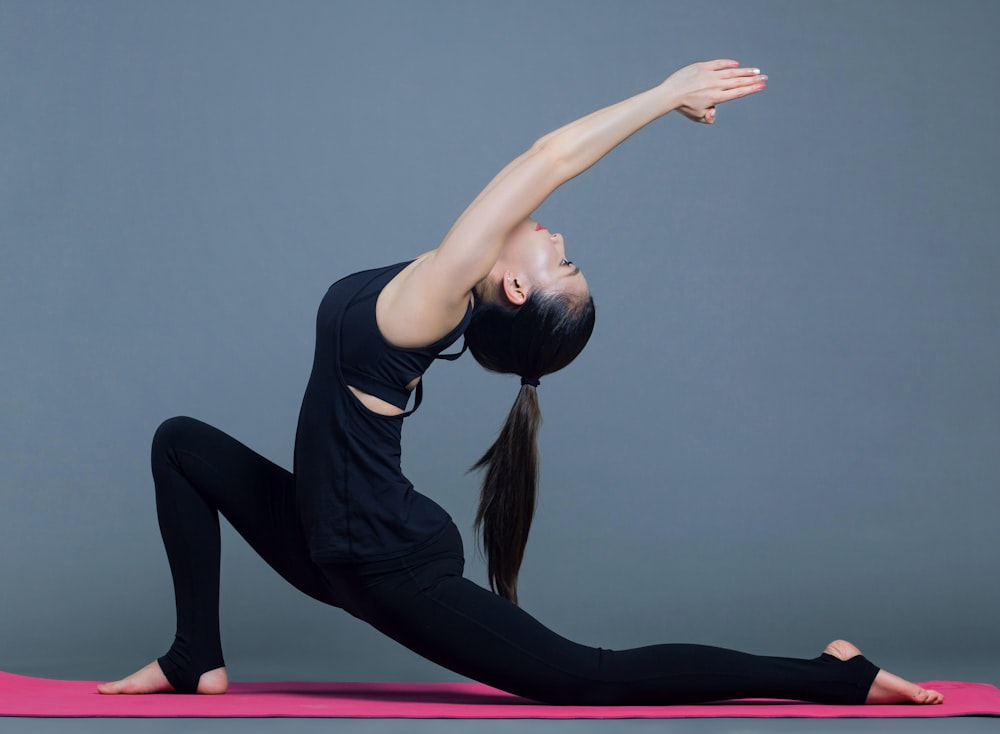
![Best Hiking Stretches [Yoga Teacher Tips]](https://funkyfreshtravels.com/wp-content/uploads/2024/05/Picture1-34.jpg)
![Mantras for Burning Sage: Prayers and Full Process [2025]](https://funkyfreshtravels.com/wp-content/uploads/2024/05/Picture23-14.jpg)

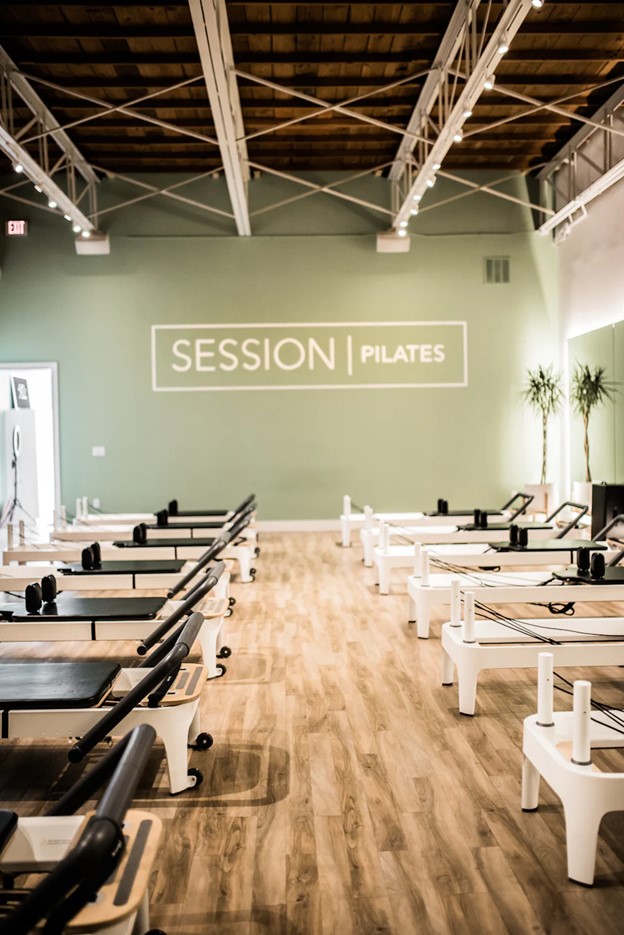

![What Is Hot Yoga (Bikram Yoga Def): Tips, Benefits [2025]](https://funkyfreshtravels.com/wp-content/uploads/2024/05/Picture1-28.jpg)